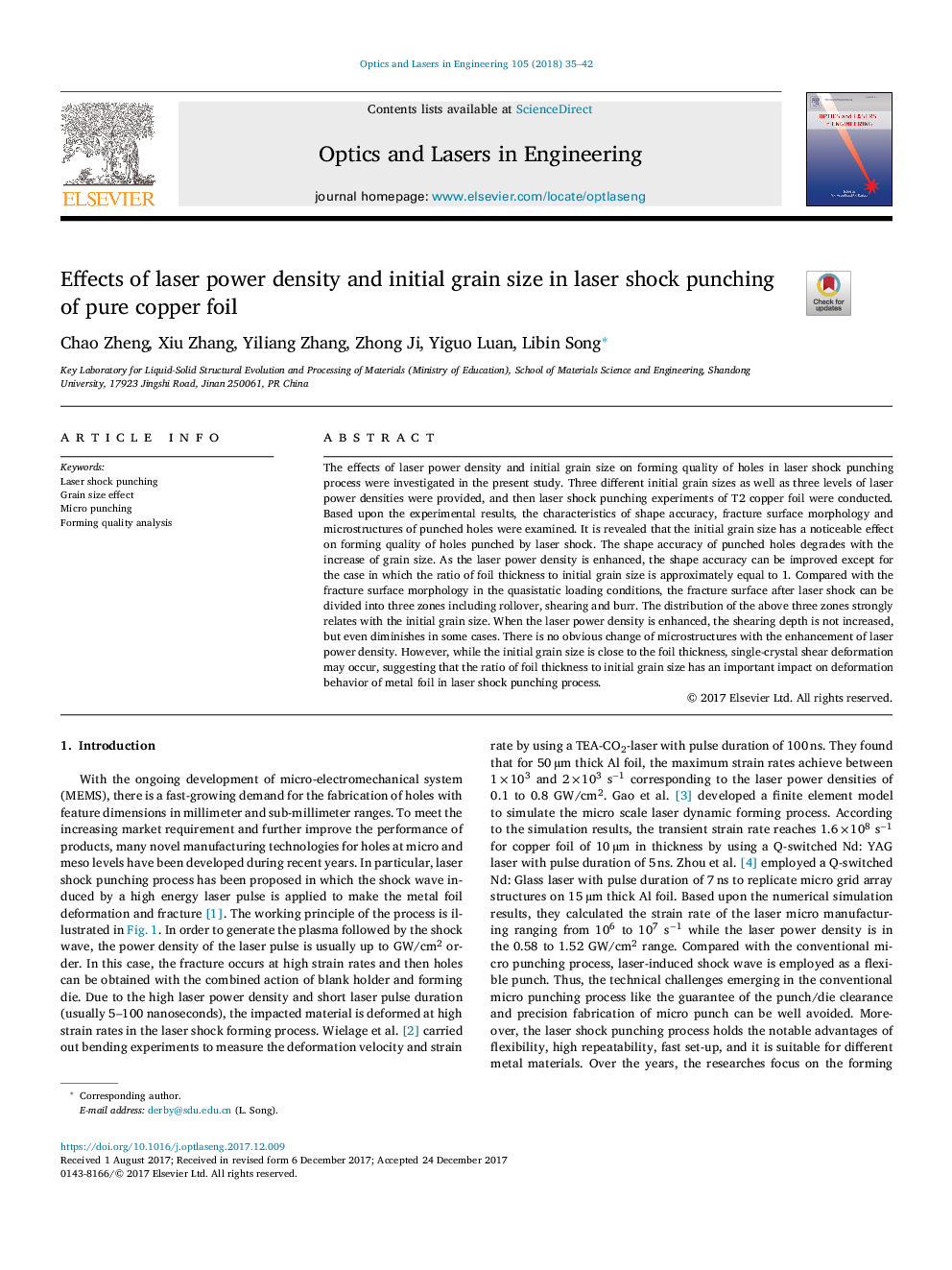| Article ID | Journal | Published Year | Pages | File Type |
|---|---|---|---|---|
| 7131668 | Optics and Lasers in Engineering | 2018 | 8 Pages |
Abstract
The effects of laser power density and initial grain size on forming quality of holes in laser shock punching process were investigated in the present study. Three different initial grain sizes as well as three levels of laser power densities were provided, and then laser shock punching experiments of T2 copper foil were conducted. Based upon the experimental results, the characteristics of shape accuracy, fracture surface morphology and microstructures of punched holes were examined. It is revealed that the initial grain size has a noticeable effect on forming quality of holes punched by laser shock. The shape accuracy of punched holes degrades with the increase of grain size. As the laser power density is enhanced, the shape accuracy can be improved except for the case in which the ratio of foil thickness to initial grain size is approximately equal to 1. Compared with the fracture surface morphology in the quasistatic loading conditions, the fracture surface after laser shock can be divided into three zones including rollover, shearing and burr. The distribution of the above three zones strongly relates with the initial grain size. When the laser power density is enhanced, the shearing depth is not increased, but even diminishes in some cases. There is no obvious change of microstructures with the enhancement of laser power density. However, while the initial grain size is close to the foil thickness, single-crystal shear deformation may occur, suggesting that the ratio of foil thickness to initial grain size has an important impact on deformation behavior of metal foil in laser shock punching process.
Keywords
Related Topics
Physical Sciences and Engineering
Engineering
Electrical and Electronic Engineering
Authors
Zheng Chao, Zhang Xiu, Zhang Yiliang, Ji Zhong, Luan Yiguo, Song Libin,
